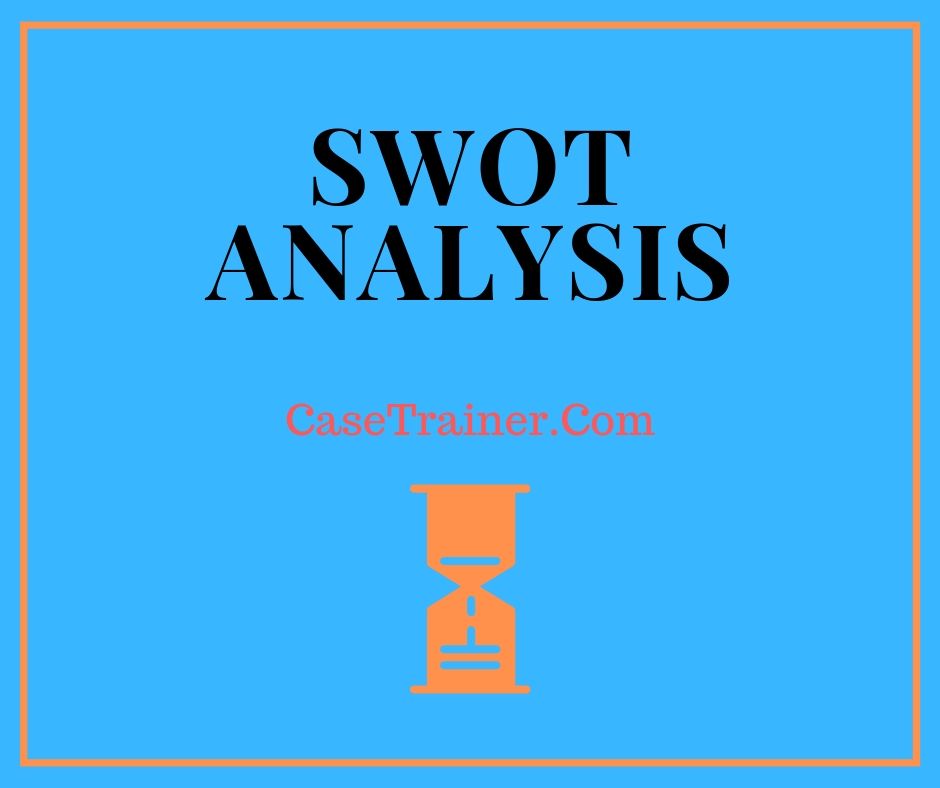Samba Bank 2 Case Study Solution and Analysis
Intro
Samba Bank 2 Case Study Solution is the largest publishing business with a greatest market share in the China's book retail market. CMP provides a variety of services including; collecting info, processing information and interaction services. Major company segments of the business consist of; books, regulars, consultancy and circulation. The company has a large item portfolio and its significant products consist of books, regulars, online media, exhibitions, research study reports and so on. Samba Bank 2 Case Study Help has actually become a specialized info company and a large extensive Science and Innovation publishing business through the combination of print media, audio-visual media and the network media.
Critical Concerns
Although, Samba Bank 2 Case Study Analysis has spent its 60 years journey efficiently, being a successful publishing home, however, the altering macro market trends and forces bring specific challenges to the publishing market in general and CMP in particular. These factors include;
• Entrance of the brand-new publishing companies in the market.
• Declining development of the publishing market.
• Market saturation.
• Introduction of digital publishing strategies
• Improvement of science and innovation.

The transformation of the macro markets have raised several concerns to the management at CPM that what could be the future of CMP in this circumstance? Do the long important experience, technical resources and the capabilities of the business could be utilized to pursue the future advancement unceasingly? How could the business sustain its long term competitive position in future?
Situational Analysis
Internal Analysis
SWOT Analysis
Strengths
Samba Bank 2 Case Study Analysis has particular strengths that can be used to minimize the threats, get rid of the weak point and avail the opportunities. Strengths of CMP are given as follows;
• The long term experience of Samba Bank 2 Case Study Help in the publishing industry i.e. 60 years enables the business to supply high quality items at a lower cost utilizing its previous experiences.
• The technical resources and abilities produced by its effective journey provide a competitive benefit to CMP.
• Vast product portfolioof CMP assists it to diversify its threat and supply high worth to its clients.
• Strong monetary position enables the company to think about several advancement chances without any worry of raising fund externally.
Weak points
In addition to the strengths, the company has specific weak points which might increase restrictions for the company in executing its advancement program. The weak points of Samba Bank 2 Case Study Solution are given as follows;
• Despite of being a science and innovation publishing firm, the company still has standard methods ofpublishing which are not suitable with the growing technological shift.
• CMP highly relies over the Chinese markets for its development. It needs to propose particular growth strategies to prevent its dependence over the Chinese markets to attain long term development.

Opportunities
The development of the publishing market is decreasing because 2008, affecting Samba Bank 2 Case Study Help as well, but the development might be restored by availing certain opportunities presented in the market. The marketplace opportunities for CMP consist of;
• The company might also present Digital Publishing by utilizing its long term technical experience and a strong customer recognition in the market.
• CMP might think about a development program through the growth towards foreign markets in order to decrease its reliance over Chinese markets by utilizing its huge financial resources.
Hazards
The altering macro patterns in the market and increasing competitors in the publishing industry has actually presented particular dangers to Samba Bank 2 Case Study Analysis including;( Gurel, 2017).
• Introduction of digital publishing i.e. virtual libraries might cause decreasing market share of Samba Bank 2 Case Study Solution due to the customer shift towards digital libraries.
• The existence of large number of rivals in the publishing market increase the threat for CMP to lose its competitive position in the market, as rivals can acquire a strong customer base by using certain strategies like aggressive promo, quality items, etc.
• Entrance of brand-new publishing firms in the industry in addition to existence of high competitors increases the threat of losing the consumer base.
Financial Analysis.

The business has a rather competitive financial performance. Due to absence of information, the monetary ratios of CMP might not be calculated. The total financial performance of the company might be analyzed by utilizing the charts offered in the case Appendices. It might be evaluated from the Appendix III that the annual overall earnings of CMP throughout the duration 2000-2012 are growing at a high development rate, showing that the yearly demand of the items of Samba Bank 2 Case Study Analysis is growing and the company is rather effective in attracting a large number of customers at a possible rate.
Together with it, the 2nd graph which shows the yearly growth in the Samba Bank 2 Case Study Analysis total possessions, shows that the business is quite effective in adding worth to its possessions through its profits. The growth in possessions reveals that the total worth of the firm is likewise increasing with increasing the overall earnings. (Unknown, 2013).
Another monetary analysis of the company using the given information might be the analysis regarding the circulation of overall incomes of the business. Major part of the profits of CMP originates from the sales of its released books i.e. 64% as shown in the Case Appendix V. The company might move towards other service sectors with a potential development to accomplish its future advancement objective.
PESTEL Analysis
PESTEL analysis might be performed to discover the numerous external forces impacting the efficiency of the company and the recent patterns in the external environment of the business. A quick PESTEL analysis of the business is offered as follows; (Alanzi, 2018).
Political.
As the publishing sector might have a considerable impact on the state of mind of individuals about the communist ideology of the government, therefore, the publishing sector is extremely supervised and assisted by the Publicity Department of the Communist Party of China. Therefore, it could be stated that the overall political forces affecting Samba Bank 2 Case Study Help service are high. The federal government policies concerning the publishing sector are also increasing with the passage of time.
Economical.
Financial forces impacting the publishing sector in general and the CMP in particular includesthe costs of paper, the income level of customers, the inflation rate, and the total GDP development of the country. All these forces integrate impact the demand for the publishing market.
Social and Demographical.
The customer choices are moving towards digital publishing rather than the conventional was of publishing. In this regard, CMP should focus on digital publishing to fulfill the altering customer preferences.
Technological.
Technological forces affecting the CMP consist of the technological improvement in the reading methods and so on. Improvement of science and innovation in addition to the rise of digital publishing could reduce the demand for the CMP products, if particular actions would not be taken quickly.
Environmental.

Environmental forces impacting Samba Bank 2 Case Study Analysis includes the concerns of environmental neighborhoods over the usage of paper in publishing books. The paper used in the books while publishing is needed to be disposable and the ink used while publishing should not be damaging for the environment.
Legal.
Legal policies for the publishing sector at whole are high. The legal regulations relating to the publishing sector is controlled by the General Administration of Press and Publication. Publishing Ordinance 1997 needs the publishers to be approved initially by the Government to be entered in the publishing market. The ordinance prohibits direct participation of foreign entities and individuals in the publishing sector.
Market Analysis (Porter's 5 Forces Design).
Porter's 5 Forces Design could be used to evaluate the attractiveness of the publishing market China. A short analysis of the Porter's 5 Forces is given as follows;.
Threat of New Entrants.
Dangers of new entrants in the Chinese Publishing Industry is moderate. The potential development in the market tends to draw in new entrants to the publishing market. However, the presence of intense competition and the requirement of big capital tends to demotivate new entrants to enter in the market.
Hazard of Alternative.
Threat of Replacement is high for the Chinese Publishing Market. The alternative products for the published files is the documents provided in the digital libraries on certain websites. The changing consumer choices towards digital learning increase the danger of substitution for the industry.
Competitive Competition.
Competitive competition in the publishing market is high. The existence of large number of customers in the Chinese Publishing Industry like CIP, PTP and so on tends to produce high competitive competition for CMP. In addition to it, brand-new entrants are likewise participating in the marketplace increasing the competitors for CMP.
Bargaining Power of Provider.
The significant providers of the Samba Bank 2 Case Study Help consist of the suppliers of the paper for releasing files. As CMP is the largest publisher in the Chinese Publishing Market, for that reason the total bargaining power of provider for CMP is low.
Bargaining Power of Purchaser.
Haggling power of purchaser in the publishing industry is high. Due to the existence of a a great deal of publishers in the Chinese market and the market saturation, the purchasers requires high quality files at competitive costs.
Rivals Analysis.
CMP runs in an extremely competitive market with the existence of a great deal of rivals. The company has a competitive position in the market with the greatest market share in the Chinese publishing market. Major competitors of Samba Bank 2 Case Study Solution include;.
• Chemical Industry Press (CIP).
• Posts and telecommunication Press (PTP).
Chemical Market Press (CIP).
CIP acts as a risk for CMP as it might wean its market share due to its long term competitive background. CIP is focused on digital publishing and might wean the market share of CMP quickly in the current market circumstance.
Posts and telecommunication Press (PTP).
It was also established in the exact same duration as Samba Bank 2 Case Study Solution and CIP. It is likewise one of the prominent gamers in the publishing market with an annual overall profits of RMB 550 million in 2010.
Alternatives
Alternative-1: Expand towards New Markets
Pros
• Minimizing reliance over the Chinese markets.
• Increasing number of Clients
• Growth opportunities.
• Preventing the effect of market saturation in the Chinese publishing market.
Cons

• Use of prospective resources in expansion.
• Threat of failure in brand-new markets.
• Time consuming.
Alernative-2: Present Digital Publishing
Pros
• Sustaining consumer base.
• Approaching new markets.
• Easy to introduce utilizing current capabilities.
• Low threat of Failure.
• Low requirement for funds.
• Increased item portfolio offers high value to customers.
Cons
• Competition in the market by CIP, who has prior focus on the digital publishing.
• Shift of focus from the core business sectors to the brand-new one can lead the company to lose need of its products in the market.
Recommendations
With the deep analysis of the internal and external environment of the business together with the market analysis and the competitor analysis, Alternative 2 is advised to CMP to achieve its future development. As the choices are moving towards digital publishing and the business need an immediate option to prevent the declining market development. Therefore, introduction of digital publishing could show to be an instant service with low amount of danger for the business. However, the business might also think about the growth program after the success of its digital publishing program.
Execution
In order to introduce digital publishing in its item portfolio, the company should initially gathers the data related to the consumer need, the prospective markets, the federal government regulations and the information related to the competitors provided in the market. If the initial offering shows a success, the business must go for the other markets. In this way the company would be able to execute its digital publishing program.
Conclusion
The growth of the publishing market is decreasing since 2008, revealing a risk to the business's long term existence, but the circumstance can be controlled by thinking about an advancement strategy in the future. The business might think about presenting digital publishingin its existing market to implement its advancement program at instant basis and to prevent the risk of failure for entrance in the new markets.

